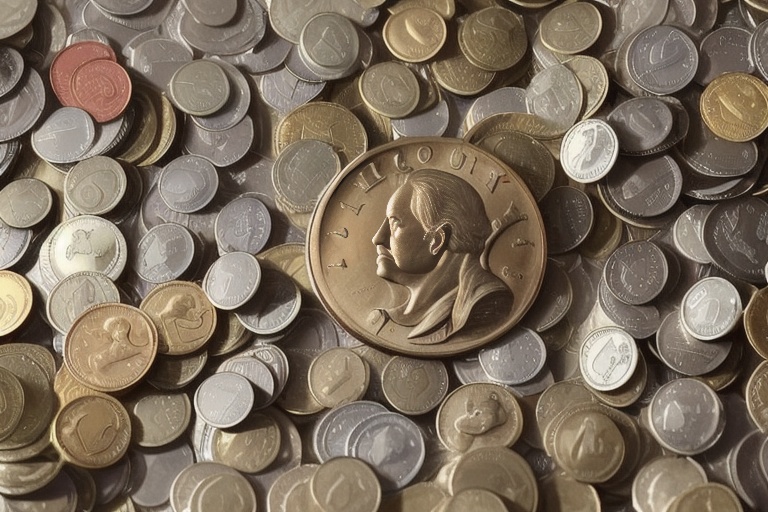Welcome to my blog, where I explore the fascinating world of coin collecting and valuation. Today's discussion dives into the significance of reeded edges on coins, revealing their historical origins and functional purposes in coin design. Reeded edges, composed of intricately carved or milled ridges, play a vital role in the preservation of coin value and the fight against counterfeiting. Furthermore, reeded edges also enhance accessibility for the visually impaired. Beyond their practicality in numismatics, reeded edges have found artistic expression in other disciplines, including furniture and architecture. Let's explore the multifaceted role of reeded edges in both coin collecting and creative design.
Welcome to my blog, where I explore the fascinating world of coin collecting and valuation. Today's discussion dives into the significance of reeded edges on coins, revealing their historical origins and functional purposes in coin design. Reeded edges, composed of intricately carved or milled ridges, play a vital role in the preservation of coin value and the fight against counterfeiting. Furthermore, reeded edges also enhance accessibility for the visually impaired. Beyond their practicality in numismatics, reeded edges have found artistic expression in other disciplines, including furniture and architecture. Let's explore the multifaceted role of reeded edges in both coin collecting and creative design.
The Purpose and Function of Reeded Edges
Reeded edges, known for their narrow and intricately carved ridges, are a common feature in many coins worldwide. While most collectors recognize this characteristic in US quarters and dimes, it is also prevalent in various coins across different currencies, including the 1 euro and larger denominations of Australian currency. Originally, these reeded edges were designed to prevent fraudulent activities such as counterfeiting and clipping—the removal of small amounts of precious metal from the edge of the coin.
Sir Isaac Newton, who served as warden of the Royal Mint starting in 1698, introduced reeding as a security measure to maintain the integrity of the coins' metal content. The rigid texture of a reeded edge made it difficult to shave off metal without leaving obvious signs of tampering.
Accessibility for the Visually Impaired
Reeded edges not only offer security benefits but also practical advantages for the visually impaired. By feeling the coin edges, individuals with vision impairments are able to differentiate between denominations, enabling them to use currency with greater ease. Such inclusivity and attention to the needs of all members of the public highlight the thoughtful design implemented in coinage.
Reeding's Artistic Expressions
While reeding undoubtedly offers significant practical functions, its influence extends to the realms of furniture and architecture as well. In furniture, reeded detailing is frequently seen on the legs of tables and chairs, infusing the items with a classical elegance reminiscent of ancient Greek and Roman design. This stylistic choice elevates the aesthetic of furniture, pointing to the refined tastes of its owner.
In architecture, reeding often adorns columns, serving a similar decorative purpose. Comparable to gadrooning, another ornamental technique, reeding adds a layer of texture and enriches the architectural landscape with its timeless charm. As a design element, reeding contributes to the depth and personality of buildings, highlighting the transformative power of such details in our surroundings.
The Lasting Impact of Reeded Edges
Reeded edges have a storied presence across various creative fields, showcasing their enduring relevance throughout history. In the context of coin collecting, they have become a vital part of understanding a coin's authenticity and history. These milled edges represent more than just an anti-counterfeiting feature; they also contribute to the distinct identity of a coin and connect to a broader aesthetic applied in other forms of craftsmanship.
The Ongoing Legacy of Reeded Coin Edges
Reeded coin edges remain a unique and meaningful feature in numismatics, providing a tactile and visual element that is appreciated by collectors and the public alike. As we look to the future, the function and appearance of reeded edges continue to resonate, signifying trust, authenticity, and the rich history of coin making. Their practicality and artistic expression form an integral part of the world of coins, demonstrative of the beauty and craftsmanship inherent in numismatics.
The lasting value of reeded edges goes beyond their practical uses. They enhance the numismatic experience for collectors, maintaining an important role in the recognition and appreciation of coins. Reeding's extended influence in other disciplines further cements its significance in our cultural and artistic lives. As time progresses, the importance of reeded edges in coin collecting and valuation remains a fascinating subject, reflecting the intricate interplay between form, function, and the enduring allure of craftsmanship.
Information for this article was gathered from the following source.




